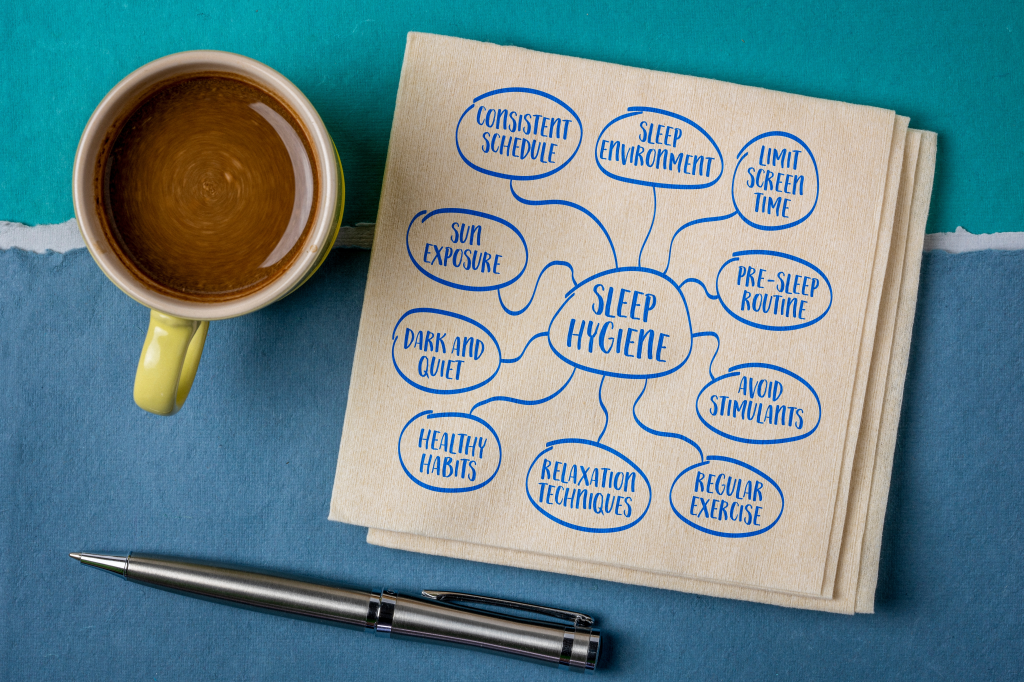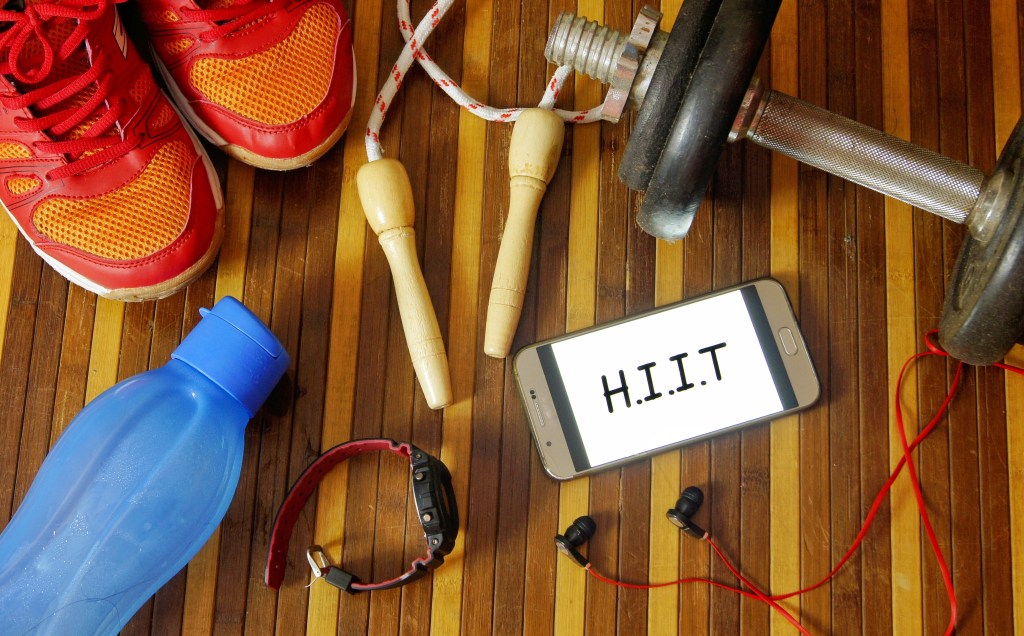At a glance
Burning fat while sleeping is possible when your body achieves deep, restorative rest and maintains a healthy metabolism. Lifestyle factors, such as meal timing, intermittent fasting, good sleep hygiene, and regular exercise, can help the body utilize stored fat for energy during rest.
Getting a good night’s sleep is vital for effective weight management, and certain dietary and lifestyle habits can boost your body’s ability to burn more calories and fat overnight.
Learn how to burn fat while you sleep and discover how focusing on sleep quality can help you achieve your health and weight loss goals.
Can you burn fat while sleeping?
Yes, it’s possible to burn fat while you sleep. In fact, getting deep and restful sleep is a fundamental aspect of metabolic health and, therefore, maintaining a healthy body weight.
Sleep plays a vital role in regulating various critical functions linked to weight management, and poor sleep quality or lack of adequate sleep duration can quickly lead to weight gain.
Here are vital sleep functions linked to body weight control and fat-burning:
- Regulates hunger and stress hormone release
- Supports body temperature control
- Repairs and rejuvenates muscle tissue
- Promotes steady energy levels during the day
“Even at rest, the human body burns a significant amount of calories to maintain essential physiological functions,” explains Dr. Berg. “Your dietary and lifestyle habits can greatly influence whether your metabolism can tap into stored body fat when you are sleeping.”
Lack of deep sleep on a regular basis is directly linked to poor metabolic health and weight gain. It’s believed that a sleepy brain drives hunger and cravings for high-calorie foods, which can contribute to obesity.
This has been confirmed by research published in Nutrients, summarizing, “Sleep deprivation is associated with an increased risk of obesity, type 2 diabetes, hypertension, and other cardiovascular diseases, and even premature death.”1
Watch the video below to discover seven simple hacks to burn more fat while sleeping.
How to burn fat while you sleep
Factors such as your dietary habits, mealtime schedule, exercise routine, and overall health status can significantly affect your body’s capacity to burn stored body fat at rest.
Here are six ways to boost fat-burning and lose weight while you sleep.
1. Practice intermittent fasting
While most people believe body composition is determined by what you eat, the timing and frequency of meals are equally important for weight management.
If you eat late meals, especially if they contain carbs and sugars, your metabolism will process these first, making it harder to burn fat efficiently.
Intermittent fasting is an excellent tool to promote fat-burning at rest as reducing meal frequency and fasting for prolonged periods improve the body’s ability to burn stored fat for energy.
Evidence published in Nutrients shows that intermittent fasting enhances metabolic efficiency at rest and supports significant weight loss, particularly by reducing visceral fat stored around the abdomen.2
An intermittent fasting schedule, such as 16:8–characterized by a 16-hour fast followed by an 8-hour eating window–can help shift your body into fat-burning mode.
This is especially effective at night if the last meal is consumed several hours before bedtime, giving your metabolism time to process food and tap into stored fat reserves while you sleep.
2. Focus on sleep-promoting foods
Achieving restful sleep is vital to maximize fat-burning at night, and incorporating sleep-promoting foods at dinner time is an excellent strategy to support this process.
Some of the best foods to support a good night’s sleep include:
- Kefir
- Lactobacillus reuteri yogurt
- Sauerkraut and kimchi
- Avocados
- Oily fish like salmon, tuna, and sardines
In addition, tart cherry juice is a rich source of the hormone melatonin, which plays a critical role in sleep cycle regulation and helps you fall asleep.

3. Practice good sleep hygiene
Maintaining good sleep hygiene is critical for helping you fall asleep fast and minimize nighttime waking. This allows your body to regulate metabolic processes and maximize fat-burning.
Here are healthy sleep habit recommendations published by the Sleep Foundation3:
- Keep a regular sleep schedule, even on weekends
- Aim for at least seven hours of sleep
- Avoid napping late in the day
- Keep electronic devices out of the bedroom
- Use blackout curtains to block light
- Follow a healthy diet and consistent exercise routine
- Avoid screen time before you go to bed
- Don’t drink caffeine within six to eight hours of bedtime
- Limit or avoid alcohol
4. Follow Healthy Keto®
A high-carb diet is a leading cause of weight gain, and eating carbs and sugars too close to bedtime can trigger blood sugar and insulin spikes, making it harder for your body to burn fat overnight.
Following a nutrient-dense low-carb diet such as Healthy Keto®, especially if combined with intermittent fasting, supports stable blood sugar levels, enhances overnight fat-burning, and helps regulate appetite.
This approach provides your body with the energy it needs while minimizing fat storage, which helps manage weight and improve metabolic health over time.
In addition, Healthy Keto avoids processed and junk food, which can disrupt sleep quality and contribute to late-night cravings.

5. Incorporate high-intensity exercise
Full-body workouts and high-intensity interval training (HIIT) not only increase calorie burn but also trigger growth hormone release, which promotes fat burning and the development of muscle mass.
Muscle is the most metabolically active tissue in the body. Building lean muscle through HIIT exercises and strength training boosts your metabolic rate, helping your body burn more calories in a resting state and overnight.
This has been confirmed by research published in The Journal of Clinical Investigation, stating that individuals with high skeletal muscle mass burn more calories at rest than those with lower muscle mass.4
6. Address underlying health issues
Certain medical conditions can disrupt both sleep quality and metabolic balance, creating a double impact that makes weight loss challenging and increases the risk of obesity and related health issues.
A study published in the International Journal of Epidemiology found that individuals prone to snoring and people with sleep apnea are at greater risk of being overweight.5
Those affected by snoring and sleep apnea also appeared to consume more alcohol, which contributes to weight gain and sleep disturbances, creating a vicious cycle of poor rest, hormonal imbalance, and further fat accumulation.
In addition, thyroid issues, high blood pressure, mood disorders, and metabolic conditions such as insulin resistance or type 2 diabetes can disrupt sleep and drive weight gain.
This highlights the importance of addressing underlying health issues through medical support, dietary adjustments, and lifestyle changes.
Key takeaways
- Deep, restful sleep supports fat-burning by regulating hunger and stress hormones, repairing muscle tissue, and maintaining steady energy levels.
- Exercise routines and sleep quality can influence the body’s ability to use stored fat for energy during rest.
- Intermittent fasting and nutrient-dense low-carb meals help promote a healthy metabolism and improve overnight fat utilization.
FAQ
Can you burn fat while sleeping?
Yes, you can burn fat while sleeping. Even during rest, your body uses energy to maintain essential physiological functions, and by adopting beneficial diet, exercise, and sleep habits, you can shift these metabolic processes toward increased fat burning overnight.
How do you burn belly fat at night?
Some of the best ways to boost fat burning at night include intermittent fasting, avoiding late-night meals, and following a low-carb diet alongside a consistent exercise routine. In addition, it’s critical to support deep and restful sleep by maintaining good sleep hygiene, addressing any underlying health issues that can interfere with rest, and creating a calming bedtime routine that allows your body to fully recover and optimize overnight fat metabolism.
Does sleep disruption impact weight loss?
Yes, poor or insufficient sleep can cause hormonal imbalances that slow metabolic processes, which makes weight loss more difficult and may even contribute to weight gain.
In addition, sleep-related fatigue heightens hunger and cravings, particularly for sugary or processed foods, which can further undermine weight loss efforts.
How many calories do you burn while you sleep?
How many calories you burn while you sleep depends on your metabolic efficiency, lean muscle mass, age, and health status. However, it’s estimated that the average adult burns around 50 calories per hour during sleep, which can add up to around 400 to 600 calories over a whole night.








